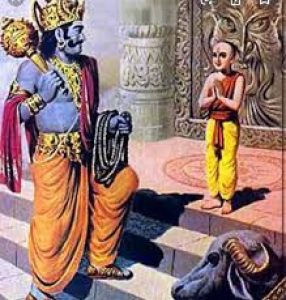Part – I
Historically, Buddhism and Zen came to the West prior to the Advaita philosophy. Their teachings made a deep impact on the Western mind. Particularly, the Mountain and River Sutra and the Return of the Bull to the Market are well-remembered today even by those who moved on to the Advaita philosophy. The Mountain and River Sutra runs something as follows:
“When I first began to practice, mountains were mountains and rivers were rivers. As I trained, mountains were not mountains; rivers were not rivers. Now that I am established in the way, mountains are once more mountains and rivers are once more rivers.”
However, when viewed from an Advaita philosophy angle, the last line above gets modified roughly as: ‘Now that I am established in the Advaita way, I find that mountains are the Self, rivers are Self, and there is Self Alone and no second (thing).’ In the second story too, the fulfilled seeker would usually end up with no interest in the market or conducting transactions within it, because his/her sense of doership – experiencership (kartrutva – bhoktrutva) doesn’t continue after Self-realization is fully achieved.
But the Western Advaita teachers like to hold that “nothing needs to change” on the attainment of Self-realization and that the multifaceted world and their interactions within it will continue. In order to buttress their argument, they tell us that Ramana quotes Shankara to say that, “brahman is the universe” and being already brahman, the world cannot get affected. From their own personal code of conduct and behavior (see The Pre-requisites, we referred to in Part – 1), an observer gets the impression that they would, as though, like to keep their one leg entrenched in the dualistic world and its allurements.
[Note: True, nothing needs to change ‘out there.’ But a change does happen in one’s “vision” after Self-realization, as we will see towards the end of this article.]
The Ramana quote claiming brahman is the world does sound a bit strange; It’s like saying all Gold is ring. But did not Shankara Continue reading →

 On the insistent questioning of the highly determined Naciketas, Lord Yama had no alternative but to reveal the secret code to ending the transient mortal world and realizing the “immortality” that one actually and already is. It is not some thing new that one acquires. It is prAptasya prAptiH (
On the insistent questioning of the highly determined Naciketas, Lord Yama had no alternative but to reveal the secret code to ending the transient mortal world and realizing the “immortality” that one actually and already is. It is not some thing new that one acquires. It is prAptasya prAptiH (